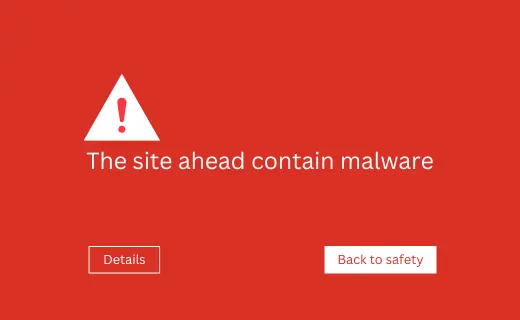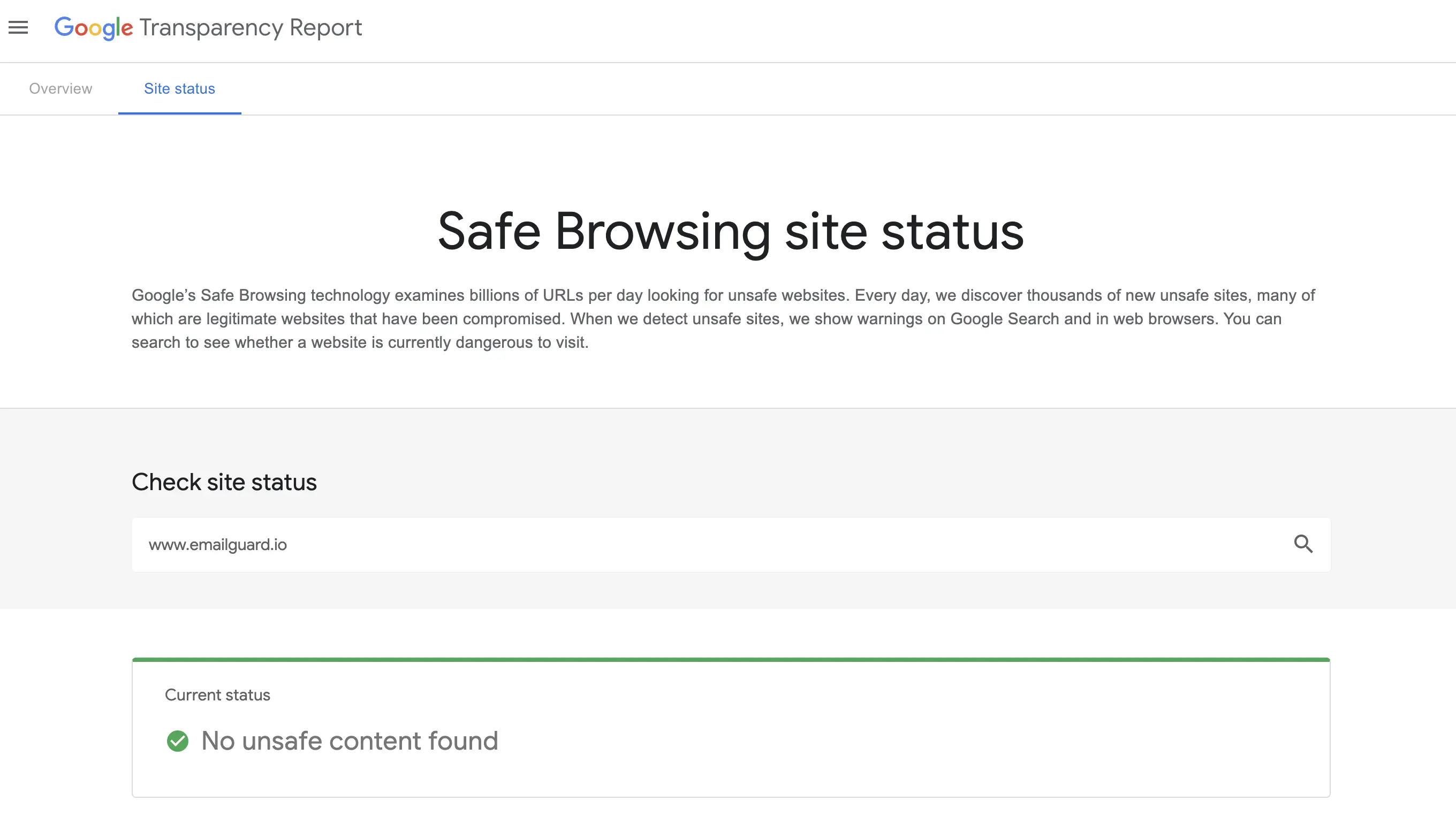How to article
What is URL Blacklist and How to Avoid It?

Your website is an important component of your business. It is what your customers and audiences see and engage with. The last thing you want is for your visitors to be greeted with a warning message, telling them that your website is unsafe. Let’s be honest, this would make anyone think twice before continuing to your website or ever revisiting it. This scary warning means your website is on a URL blacklist. Let's dive into what URL blacklist is, how websites end up on URL blacklist, and how to get off the URL blacklist.
What is URL Blacklist?
A URL blacklist is a list of websites that are flagged as malicious or engage in suspicious behaviors that may harm visitors. These URLs are identified as unsafe by various authorities, such as search engines, browsers, hosting services, security tools, etc. Being on a URL blacklist can significantly damage your brand, website reputation, and search engine rankings. Essentially, it acts as a wall, blocking users from entering your website.
What about blacklist monitoring?
Well, URL blacklist and blacklist monitoring pertain to cyber security but differ in their functions. A blacklist checker monitors your domain reputation, whereas a URL blacklist is a list of websites identified as malicious and unsafe.
With EmailGuard’s blacklist monitoring, we focus on your email deliverability and reputation. We’ll automatically monitor your domains, IP addresses, and sending servers. Get notified instantly if you are found on any blacklist provider, and we’ll provide you with the details to get delisted. Even though blacklist monitoring and URL blacklist serve different functions, they play an important, complimentary role in maintaining cyber security.
How does a URL get blacklisted?
URL blacklists are preventative measures to ensure cyber security. These blacklists exist to protect users from malicious activity and phishing schemes. Some of the most common reasons websites end up on the URL blacklist are:
Phishing. Phishing websites pose as legitimate sites used to trick the user into sharing personal and private information such as payment details, social security numbers, and passwords.
Malware. This is when websites are infected with malware code such as trojan horse. A trojan horse is a malicious software or code that appears legitimate, but it's true intent is to deceive users into installing harmful malware onto their device. Once downloaded, it can take unauthorized control of your device and perform harmful actions.
SEO Spam. This is a practice that goes against SEO guidelines and results in a site being blacklisted. SEO spam is when bad actors access your website and populate it with spammy content to manipulate search engines for a higher ranking. This is generally known as black hat SEO and these techniques should be avoided to protect your website from being blacklisted.
Illegal Practices. If a website is compromised or found to engage in illegal activity without your knowledge it can become blacklisted.
Adware. Websites that show ads, pop-ups that are irrelevant to a site's content can significantly impact its performance and the way users interact with the website. Ads that can lead to malicious websites for phishing schemes, or install malware to devices can result in url blacklist.
Unsafe Plugins. Plugins are installed to offer websites additional functionality and convenience. However, when installing these plugins, it’s imperative to do your due diligence to ensure they were developed by a trusted and credible source. This is absolutely necessary because some bad actors may try to gain access to your website under the guise of these malicious plugins. These plugins contain harmful code that is injected into your website with harmful intent.
How do I know if my website is on URL blacklist?
The first sign of your website being on the URL blacklist is the warning message. You can perform a quick site query by simply typing in your URL on Google. If the results return a warning message, that is a strong indication that you are on a URL blacklist. Also, you can use free online tools to check if your website is on a URL blacklist.
Google provides tools that allow website owners to conduct audits of their sites. These tools include Google Search Console, Google Safe Browsing, and Google Analytics. Site owners can receive insights and updates on the performance of their website, including any security issues or threats that may arise. On the Google Search Console dashboard, you can see a “Security & Manual Actions” tab that has an option to view “Security issues.” This is a great resource, as it warns you of any issues detected on your website. Let’s say you regularly monitor your website traffic using Google Analytics. Suddenly, you see a huge drop in your website traffic, which can be a possible consequence of your website being on the URL blacklist. To confirm whether or not your URL is blacklisted, you can use Google Safe Browsing to see the status of your website.

How to remove your website from URL blacklist?
Being on a URL blacklist is not a fun situation. It is important to act fast and get your URL delisted. Let’s explore some of the techniques to get off the URL blacklist and ensure your website is healthy.
Step 1: Clean up your website’s content and remove any malicious software or code
You can do this step yourself by identifying and removing any malware from your website. If you choose to do it yourself, create a backup of all your files and use antivirus software to scan and detect any malware on your site. Once you are able to pinpoint the corrupted code, remove it immediately. If your website uses plugins, ensure they are up to date. It is recommended to remove any outdated plugins.
If you do not want to go through the hassle of doing this yourself, you can hire a professional or use third-party services and tools to help you scan and remove malware from your website. It is important to note that these services come at a cost, but they provide you with peace of mind by taking care of your security issues.
Step 2: Request a website review from Google
Once your website is clean and free of any malware, submit it for a review from Google. You can request a review using the Google Search Console. To request a review, navigate to the “Security issues” tab located under “Security & Manual Actions.” Then, click on “I have fixed these issues” and proceed to “Request a review.” An important note: Google may ask you to list the steps you took to fix the issues; be sure to provide as much detail as possible.

Once you submit your website for review, it may take a couple of days before you know the status of your website. If all checks are met and Google determines your website is safe for users, your website will be cleared and removed from the URL blacklist. Hooray!
Conclusion
Let’s be honest, being on a URL blacklist is not a great experience. It tells users that your website contains harmful content. This can have damaging effects on your online presence, reputation, and search engine ranking. That is why it is so important to take proactive measures, such as regularly auditing and monitoring your site, to identify and fix any security issues or breaches. Don’t forget to use tools like Google’s Safe Browsing site status to check whether or not your website has any unsafe content. These preventative measures keep your website off the URL blacklist and offer your website continuous security.
Everything you need to power up your email game in one place.
Start now for free. No credit card required.
